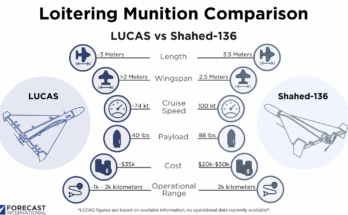The Senate passed a continuing resolution on September 26 by a vote of 82-15. The House already passed the bill on September 19 by a vote of 301-123. The bill now heads to the president’s desk, where he is expected to sign it into law. The legislation would keep the federal government operating at FY19 levels through November 21, 2019.
Although lawmakers have already agreed on topline spending levels for FY20 and FY21, Congress needs more time to iron out the actual appropriations bills required to keep the government running in FY20. The budget deal included a promise to avoid poison pill amendments, but there remains a disagreement over how to handle border wall funding being siphoned from the military construction budget.
Department of Defense officials have said they hope to keep their portion of the CR to just a few weeks. The House passed its version of the FY20 defense appropriations bill earlier this year, but the Senate has been lagging behind. The Senate Appropriations Committee approved its markup last week, but the full chamber has not voted on the bill. A conference committee will ultimately be established to iron out the differences between the House and Senate versions of the legislation.
The DoD has become rather adept at handling short-term CRs, so a brief delay in passing the FY20 budget is not expected to have a significant impact on the Pentagon. However, the impact of a CR is greatly magnified if weeks turn into months. As such, the military will likely continue to put pressure on Congress to expedite the passage of the FY20 defense appropriations bill.
Update (September 30, 2019): The CR was signed into law on Friday, September 27.
Shaun's deep-rooted interest in military equipment continues in his role as a senior defense analyst with a focus on the United States. He played an integral role in the development of Forecast International's U.S. Defense Budget Forecast, an interactive online product that tracks Pentagon acquisition programs throughout the congressional budget process. As editor of International Military Markets – North America, Shaun has cultivated a deep understanding of the vast defense markets in the United States and Canada. He is a regular contributor to Forecast International's Defense & Security Monitor blog and has co-authored white papers on global defense spending and various military programs.




